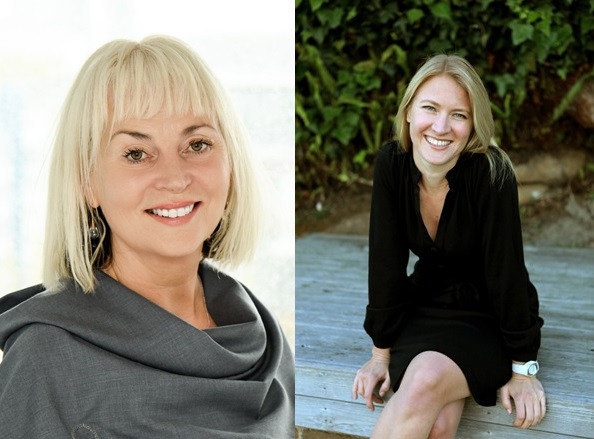Greer Simpkin and Joanna Werner.
The percentage of female feature film producers in Australia is already well above the global average, a new report reveals, and is continuing to improve.
But female representation in features is still well short of gender parity despite tangible results from Screen Australia’s Gender Matters initiative.
“Industry wide in Australia there has been an increase in female producers working in feature films,” says Werner Film Productions’ Joanna Werner, a member of the Gender Matters Taskforce. “We’re seeing a lot of female producers active in major forthcoming features including Top End Wedding, Palm Beach, Relic, The Nightingale and Little Monsters.
“There is no denying that since the launch of the Gender Matters initiative positive steps have been made to address gender parity in the sector. In 2017/18 Screen Australia hit our Gender Matters KPI for the first time and in August this year we’ll know if we hit the overall KPI of the Gender Matters program.
“Feature film has the lowest female producer participation in the sectors which the agency measured. Feature film remains the primary area where significant improvement in female participation is required.”
According to a new global study by British researcher Stephen Follows, women accounted for 26.4 per cent of all producing credits on feature films in 2018.

By contrast, last year Screen Australia reported the average of female producers on films from July 2011 – June 2017 was 34 per cent.
In TV drama over those six years there were more female producers – 52 per cent- than male. In the same period in documentary, it was basically at parity (49 per cent female). Female directors fared even worse in features at 16 per cent.
Welcoming the upward trend of women producers on features, producer Sue Maslin tells IF: “It is significant because women producers overwhelmingly give women writers and directors the opportunity to tell their stories on screen.
“But we are coming off a low base well short of gender parity and the research demonstrates that women are more likely to produce lower budget productions and documentaries. All of this speaks to perceived risk in the eyes of those who green light what is made and what is programmed and these people are still overwhelmingly male.”
Screen Producers Australia CEO Matt Deaner says: “I think things are changing and improving, While there’s still a discrepancy at CEO/MD level, creative producers or those driving shows are definitely more even.”
Bunya Productions’ Greer Simpkin observes: “Internationally the screen industry has far fewer women than men in the key creative roles of director, writer and producer and the Australian screen sector is no different.
“We should be producing and enabling the very best work. And if females are so poorly represented, it means that we, as an industry, aren’t exploiting all we have to offer. The same goes for diversity in the sector in general.
“The long game is about levellng the playing field to ensure that women get the same opportunities as men and that the strongest work gets supported.”
Follows’ research of films produced by women between 1990 and 2018 showed Australia was the fourth-highest among 20 countries at 27 per cent. Surprisingly the Philippines ranked first with 37 per cent followed by Brazil’s 35 per cent and Sweden’s 28 per cent.
However as film budgets rise, the ranks of female producers dwindle. Women produced 23 per cent of movies budgeted below $5 million but just 16 per cent of films budgeted above $50 million, Follows found.

SPA is helping to narrow the gender gap by supporting initiatives such as Dame Changer, WIFT and the producers collective Screen Vixens while its Ones to Watch program has had more female than male participants over the past three years.
“We’re also seeing more and more female professionals across business affairs, line producing, lawyers etc,” Deaner adds.
As he also points out, numerous screen businesses have women at the top or in senior roles. That list includes Goalpost Pictures, Princess Pictures, Bunya Productions, Every Cloud, Closer Productions, Film Art, Werner Film Productions, Fremantle, Feisty Dame, Causeway Films, Flying Bark, Aquarius Films, Media Stockade and Brindle Films.
Simpkin advocates some form of target or quota beyond those set by Screen Australia and state agencies. “A a lot can be achieved by a simple lever, a policy twist, a bit of action by producers in giving that female writer or director a go,” she says.
“Research shows the average Australian media and entertainment worker is a 27 year-old white man living in Bondi and that this lack of diversity in the production sector workforce was dragging down growth.
“So despite the increasing diversity of our population and our audiences, the overwhelming majority of Australia’s screen practitioners and decision makers are white, able-bodied and in senior levels of the industry – men.
“This bias is undermining our ability to innovate and connect with the storytelling potential of our increasingly diverse population.”



